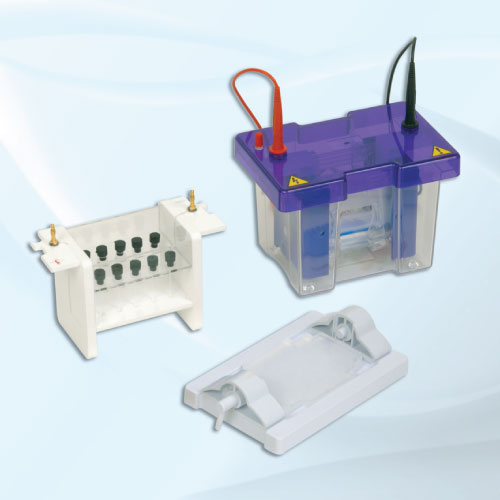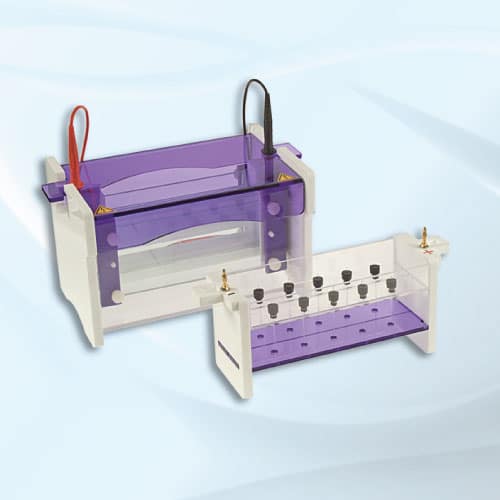
Cn120 Gentamicin
RM0.00Brand:
Thermo ScientificTM OxoidTM

Cn200 Gentamicin
RM0.00Brand:
Thermo ScientificTM OxoidTM

Cn30 Gentamicin
RM80.00Brand:
Thermo ScientificTM OxoidTM
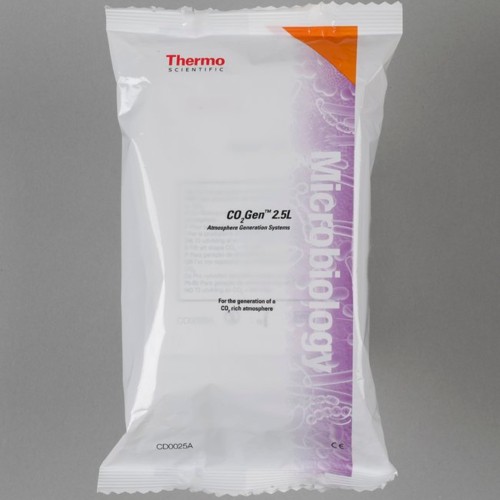
Co2gen 10/Pck
RM223.00Brand:
Thermo ScientificTM OxoidTM
Generate carbon dioxide atmosphere in AnaeroJar™ 2.5L with Oxoid CO2 Gen Sachet.
- No water or catalyst required
- No hydrogen gas produced
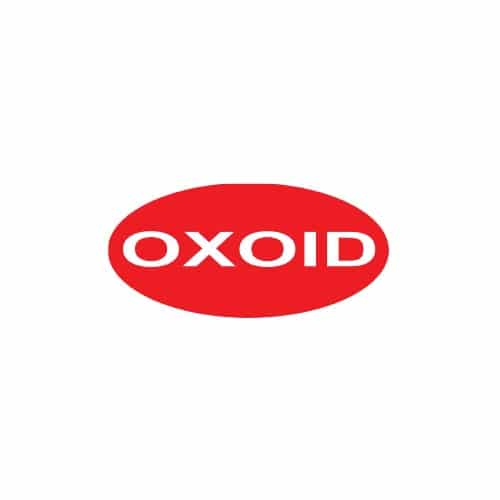
Co2gen Compact 20/Pck
RM239.00Brand:
Thermo ScientificTM OxoidTM
Oxoid CO2 Gen Compact Sachet is for use in Compact Plastic Pouch.
- No water or catalyst required
- No hydrogen gas produced
- For use with Compact Plastic Pouch, Part No. AG0020C and AnaeroGen Compact Sealing Clip, Part No. AN0005C
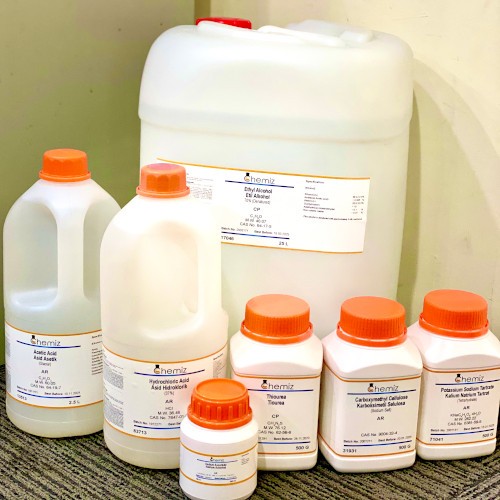
Cobalt (II) nitrate hexahydrate CP, 500g
RM269.00Brand:
Chemiz
Description
Synonyms: Cobaltous nitrate hexahydrate
Formula: Co(NO3)2 · 6H2O
Cobalt (II) nitrate hexahydrate is a red crystal that is soluble in water and most organic solvent. This chemical has many use including cleaning, metal manufacturing and metal surface treatment.
Note:
AR: Analitycal Reagent Grade: Reagents for analytical purpose or research work that need high purity.
CP: Chemically Pure Grade: Reagents for regular practical in its original purity.
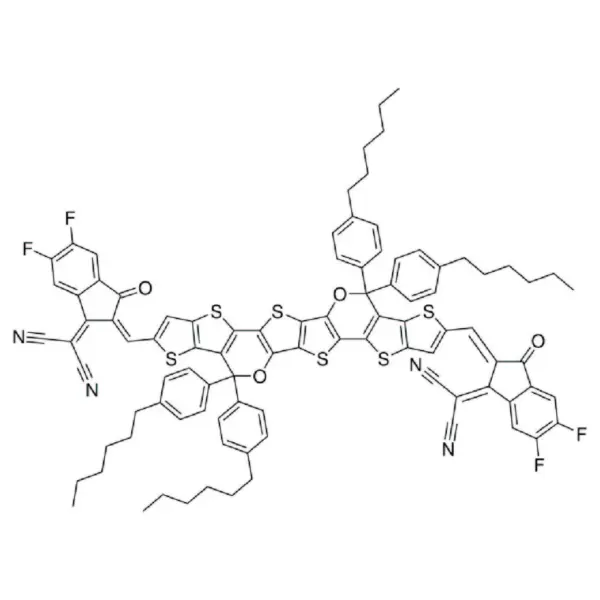
COi8DFIC – Sigma-Aldrich
RM2,758.00Brand:
Sigma-Aldrich
Synonyms
2,2′-[[4,4,11,11-tetrakis(4-hexylphenyl)-4,11-dihydrothieno[2′,3′:4,5]thieno[2,3-d]thieno[2′′′′,3′′′′:4′′′,5′′′]thieno[2′′′,3′′′:4′′,5′′]pyrano[2′′,3′′:4′,5′]thieno[2′,3′:4,5]thieno[3,2-b]pyran-2,9-diyl]bis[methylidyne(5,6-difluoro, NFA146, O6T-4F, PCE146
CAS No
2184266-44-0
General Description
COi8DFIC or O6T-4F is a highly efficient, n-type, low-bandgap nonfullerene acceptor with strong NIR absorption.
In a recent study, COi8DFIC or O6T-4F was selected in a Tandem cell by computer assited design and gave a record PCE of 17.3∃% for fabricated organic solar cells.
COi8DFIC or O6T-4F is frequently selected to blend with a narrow-bandgap donor material and another narrow bandgap acceptor material to fabricate ternary organic solar cells. The PTB7-Th:COi8DFIC:PC71BM ternary cells offered a PCE of 14.08%. By further adopting a post-annealing process, an outstanding PCE of 14.62% can be achieved. Furthermore, the device utilizing COi8DFIC exhibited a good thermal stability with PCEs over 13.5% in a wide temperature range (70–160 °C).
Application
COi8DFIC is primarily utilized as a non-fullerene acceptor in OPV devices. It exhibits a broad absorption spectrum, enabling it to absorb light across a wide range of wavelengths, including the visible and near-infrared regions. This property allows for efficient utilization of a broader range of solar radiation, enhancing the light-harvesting capability of the OPV device. COi8DFIC can be employed as the electron transport material in OFET devices.
COi8DFIC or O6T-4F is a highly efficient, n-type, low-bandgap nonfullerene acceptor with strong NIR absorption
In a recent study, COi8DFIC or O6T-4F was selected in a Tandem cell by computer assited design and gave a record PCE of 17.3% for fabricated organic solar cells.
Tandem Cell Device performance:
ITO/ZnO/PFN-Br/PBDB-T:F-M/M-PEDOT/ZnO/PTB7- Th:O6T-4F:PC71BM/MoO3/Ag
Voc=1.642 V
Jsc=14.35 mA/cm2
FF=73.7%
PCE=17.3%
COi8DFIC or O6T-4F is frequently selected to blend with a narrow-bandgap donor material and another narrow bandgap acceptor material to fabricate ternary organic solar cells. The PTB7-Th:COi8DFIC:PC71BM ternary cells offered a PCE of 14.08%. By further adopting a post-annealing process, an outstanding PCE of 14.62% can be achieved. Furthermore, the device utilizing COi8DFIC exhibited a good thermal stability with PCEs over 13.5% in a wide temperature range (70-160 °C).
Device structure:
ITO/ZnO/PTB7-Th:COi8DFIC:PC71BM/MoO3/Ag
Before annealing
Voc=0.702 V
Jsc=27.74 mA/cm2
FF=0.701
PCE=13.65%
After annealing at 80°C
Voc=0.727 V
Jsc=27.39 mA/cm2
FF=0.734
PCE=14.62%
COi8DFIC, an efficient non-fullerene acceptor material, has a strong near-infrared range (NIR) light absorption. It can be used as an n-type small molecule acceptor material for the fabrication of polymeric solar cells.

Color Prestained Protein Standard, Broad Range (10-250 kDa)
Brand:
New England Biolabs
The Color Prestained Protein Standard, Broad Range is a mixture of highly pure, recombinant, prestained proteins, covalently coupled with a blue chromophore, and two reference bands (one orange and one green at 72 kDa and 26 kDa, respectively), that resolves into 11 sharp bands when electrophoresed.
- Allows approximate molecular weight determination when performing SDS-PAGE analysis
- Applications include verification of Western transfer efficiency on membranes and fluorescent imaging of SDS-PAGE
- Direct loading, additional loading buffer and heat incubation not required
- Recombinant proteins with no detectable protease contaminating activities
- Optimal stability for up to 24 months

Columbia Blood Agar Base 500g
RM252.00Brand:
Thermo ScientificTM OxoidTM
Cultivate and isolate fastidious microorganisms with clearly visible hemolytic reactions with Thermo Scientific™ Oxoid™ Columbia Blood Agar Base (Dehydrated) when used with whole defibrinated blood (SR0050). Columbia Blood Agar Base is an ideal base medium for preparation of blood agar, chocolate agar and for preparation of various selective and identification media.
Columbia Blood Agar Base, Oxoid Composition
| Typical Formula* | gm/litre |
| Special peptone | 23.0 |
| Starch | 1.0 |
| Sodium chloride | 5.0 |
| Agar | 10.0 |
| pH 7.3 ± 0.2 @ 25°C |
Columbia Blood Agar, Oxoid Preparation:
Add 39g to 1 litre of distilled water. Boil to dissolve the medium completely. Sterilise by autoclaving at 121°C for 15 minutes. Cool to 50°C and add 5% sterile defibrinated blood.
Storage conditions and Shelf life
Store the dehydrated medium at 10-30°C and use before the expiry date on the label.
Store the prepared plates of medium at 2-8°C.
Precautions
Brucella cultures are highly infective and must be handled under properly protected conditions. Incubate in 5-10% carbon dioxide atmosphere for 24-48 hours.
Campylobacter species are best grown at 42°C (except Campylobacter fetus subsp. fetus) in a micro-aerophilic atmosphere (Oxoid Campylobacter Gas Generating Kit BR0056 or BR0060 or CampyGen CN0025/CN0035).
Staph./Strep. supplemented plates should be incubated aerobically at 35°C for 18 hours. Incubation in carbon dioxide- enriched air will cause inhibition of staphylococcal growth.
Streptococcus Selective Supplement SR0126 supplemented plates may be incubated aerobically or anaerobically at 35°C for 18 hours.
Prepared plates of both supplemented media should be used within 18 hours of preparation for maximum selectivity. Gardnerella supplemented plates should be incubated at 35°C for 48 hours in an atmosphere containing 7% carbon dioxide.
Carry out confirmatory tests on all colonies from horse blood medium and on beta-haemolytic colonies from human or rabbit blood medium.
Incubate plates of Clostridium E-Y Agar anaerobically at 35°C for 18 hours, look for lecithinase activity (pearly layer) and for proteolysis. Lecithinase activity is inhibited in the presence of specific anti-toxin.

CombiTitrant 5 , 1L (Merck)
RM0.00Brand:
Merck
Description
CAS Number : 7553-56-2
Density : 1.19 g/cm3 (20 °C)
One-component reagent for volumetric Karl Fischer titration 1 ml ≙ ca. 5 mg H₂O Aquastar®
Complete 2-D Systems – Mini to Maxi
Brand:
Cleaver Scientific
The omniPAGE 2-D Systems include both modules required for Slab Gel and First Dimension Electrophoresis and accessories, to provide a complete Mini, Mini Wide or Maxi 2-D system. The Tube Gel Module includes a rapid release gasket for easy tube extraction. Focusing can be accomplished in as little as three hours in the Mini Unit. Disposable capillary tubes are included for added convenience, plus 2-D combs and spacers which are colour coded according to thickness for easy identification.
Package includes:
- 1x omniPAGE Mini Vertical Unit which includes: 2x2mm thick notched glass plates, 2x2mm thick plain glass plates with 1mm thick bonded spacers, 1x dummy plate, 2x combs (1mm thick 12 samples), 1x casting base, silicone mat, cooling pack
- 1x Capillary electrophoresis module which includes: internal running module for tube gels, capillary tubes, blanking plugs, 2-D combs and spacers
Complete Denaturing Gradient Electrophoresis System
RM0.00Brand:
Cleaver Scientific
Denaturing Gradient Gel Electrophoresis (DGGE) is an important technique used in the search for mutations and DNA polymorphisms critical in genetic disorders and cancers, and to understand genetic diversity among species. The new omniPAGE VS20WAVE-DGGE is a flexible system that can be fully customised to perform several different mutation detection techniques. The VS20WAVE-DGGE is a versatile single-unit solution for different single-base pair mutation detection methods. The newly designed VS20WAVE-DGGE is a complete system for DNA mutation analysis.
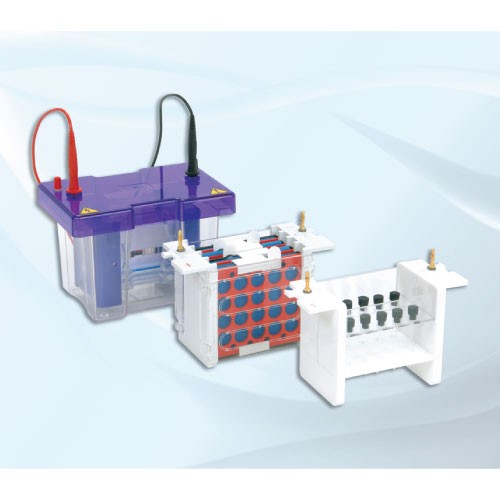
Complete Mini Wide Vertical Electrophoresis Modular System
RM0.00Brand:
Cleaver Scientific
The omniPAGE range of Modular Vertical Gel Systems allow multiple electrophoresis techniques to be performed in the same unit. These systems include all modules and accessories required for Slab Gel Electrophoresis, 2-D Electrophoresis and Electroblotting. The central component is the omniPAGE Mini Vertical unit, Mini Wide Vertical Unit or omniPAGE Maxi Vertical unit.
Package includes:
- 1x omniPAGE Mini Wide Vertical Unit which includes: 2x4mm thick notched glass plates, 2x4mm thick plain glass plates with 1mm thick bonded spacers, 1x dummy plate, 2x combs (1mm thick, 24 samples), 1x casting base, silicone mat, cooling pack
- 1x Capillary Electrophoresis Module which includes: internal running module for tube gels, capillary tubes, blanking plugs, 2-D combs and spacers
- 1x Electroblotting Module comprising: internal electroblotting module, 4x compression cassettes for gel sizes up to 20x10cm and 6x fibre pads.
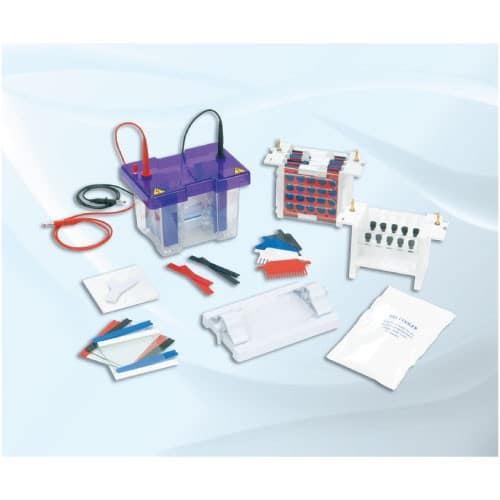
Complete System for Mini Vertical Electrophoresis
RM0.00Brand:
Cleaver Scientific
The omniPAGE range of Modular Vertical Gel Systems allow multiple electrophoresis techniques to be performed in the same unit. These systems include all modules and accessories required for Slab Gel Electrophoresis, 2-D Electrophoresis and Electroblotting. The central component is the omniPAGE Mini Vertical unit, Mini Wide Vertical Unit or omniPAGE Maxi Vertical unit. These include a rapid and intuitive casting system, enhanced and easy to set up cooling system and increased capacity to run up to four gels per run.
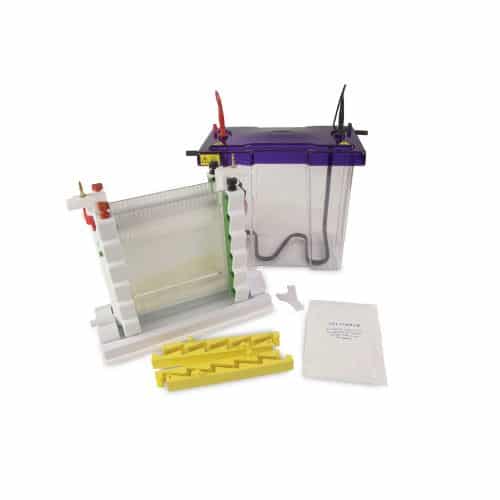
Complete WAVE Maxi System for 2-D Electrophoresis & Blotting
RM0.00Brand:
Cleaver Scientific
The VS20 WAVE complete electrophoresis system provides a fully integrated solution using one universal gel tank and lid for vertical PAGE, tube gel IEF and electroblotting:
- Interchangeable modular inserts allow users to combine vertical PAGE with capillary gel IEF to perform 2-D electrophoresis, followed by western transfer for enhanced sensitivity
- Scale-up your discovery projects using a large format, high-resolution system
- Cooling supplied for temperature-sensitive separations and samples
- High-intensity blotting system available for rapid transfers
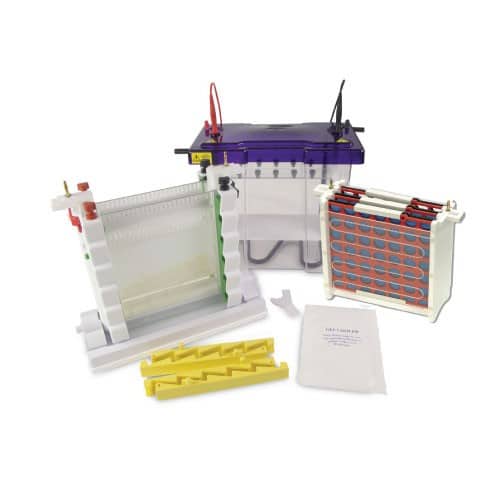
Complete WAVE Maxi System for 2-D Electrophoresis & High Intensity Blotting
RM0.00Brand:
Cleaver Scientific
The VS20 WAVE complete electrophoresis system provides a fully integrated solution using one universal gel tank and lid for vertical PAGE, tube gel IEF and electroblotting.
- Interchangeable modular inserts allow users to combine vertical PAGE with capillary gel IEF to perform 2-D electrophoresis, followed by western transfer for enhanced sensitivity
- Scale-up your discovery projects using a large format, high-resolution system
- Cooling supplied for temperature-sensitive separations and samples
- High-intensity blotting system available for rapid transfers
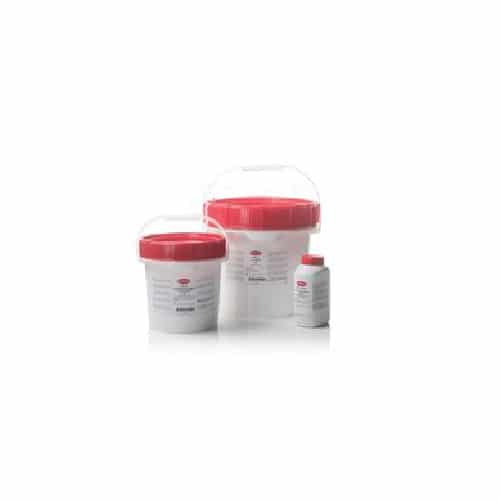
Cooked Meat Medium 500g
RM2,090.00Brand:
Thermo ScientificTM OxoidTM
Grow and maintain aerobic and anaerobic organisms with Thermo Scientific™ Oxoid™ Cooked Meat Medium (Dehydrated). The medium contains heart tissue, beef extracts, peptone and glucose for the cultivation of anaerobic and aerobic organisms. It has the ability to initiate bacterial growth from very small inocula and to maintain the viability of cultures over long periods of time1. Mixed cultures of bacteria survive in Cooked Meat Medium without displacing the slower growing organisms.
Cooked Meat Medium, Oxoid Composition
| Typical Formula* | gm/litre |
| Heart muscle | 454.0 |
| Peptone | 10.0 |
| `Lab-Lemco’ powder | 10.0 |
| Sodium chloride | 5.0 |
| Glucose | 2.0 |
| pH 7.2 ± 0.2 @ 25°C |
Cooked Meat Medium, Oxoid Preparation:
Suspend 10g in 100ml of distilled water (or 1g amounts in 10ml volumes of water in tubes). Allow to stand for 15 minutes until the meat particles are thoroughly wetted. Sterilise by autoclaving at 121°C for 15 minutes. Do not cool the bottles rapidly because ebullition will expel the meat particles from the containers.
Storage conditions and Shelf life
Store the dehydrated medium at 10-30°C and use before the expiry date on the label.
Store the prepared medium at room temperature, in the dark with tightened caps for up to 6 months.
Precautions
The excellent recovery properties of Cooked Meat Medium mean that mixed cultures commonly result from sample inoculation.
Blackening of the medium will not take place if the pH is acid.
Carbohydrate fermentation may inhibit proteolysis.

Corn Meal Agar 500g
RM955.00Brand:
Thermo ScientificTM OxoidTM
Oxoid Corn Meal Agar Mycological medium is used for identification of Candida albicans and maintenance of fungal stock cultures.
Corn Meal Agar, Oxoid Composition
| Typical Formula* | gm/litre |
| Corn Meal Extract (from 50 grams whole maize) | 2.0 |
| Agar | 15.0 |
| pH 6.0 ± 0.2 @ 25°C |
Corn Meal Agar, Oxoid Preparation:
Suspend 17g in 1 litre of distilled water. Bring to the boil to dissolve completely. Sterilise by autoclaving at 121°C for 15 minutes.
Storage conditions and Shelf life
Store the dehydrated medium at 10-30°C and use before the expiry date on the label.
Store the prepared medium at 2-8°C.
Precautions
Glucose supplemented Corn Meal Agar should not be used for chlamydospore production.
Corn Meal Agar with `Tween 80’ (or other wetting agents) will allow Candida stellatoides and Candida tropicalis to produce chlamydospores.
Some Candida strains lose their ability to produce chlamydospores after repeated subculturing.
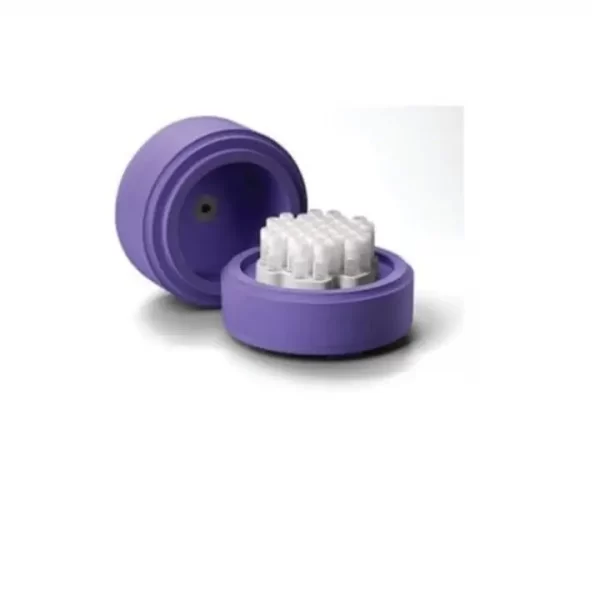
Corning® CoolCell™ FTS30 (Sigma-Aldrich)
RM3,637.00Brand:
Sigma
Description
CoolCelll FTS30 utilizes a solid state core and controlled microconvection technology to evenly draw in -80°C freezer air through a bottom base vent, uniformly disperse the cold air around each vial in the central chamber and then release the thermal load from the vials through a top vent choke. The inner vial module holds 30 cryogenic vials and can be removed in one step. Each vial achieves a uniform and reproducible -1°C/minute freezing profile and thermal profiles are highly reproducible. Due to the low thermal mass of the uniform-density cross-linked polyethylene foam container, freezing can be conducted without a rise in local freezer temperature, thereby protecting nearby samples.
Application :
-For 30 standard 1.0 mL to 2.0 mL cryogenic vials.
-Controlled micro-convection for uniform freezing of 30 vials.
-Removable vial tray for one-step transfer of samples into and out of freezing chamber.

Cpd10 Cefpodoxime
RM0.00Brand:
Thermo ScientificTM OxoidTM

Cpr30 Cefprozil
RM0.00Brand:
Thermo ScientificTM OxoidTM

CR-SMAC 500g
RM1,868.00Brand:
Thermo ScientificTM OxoidTM
- Oxoid Cefixime Rhamnose Sorbitol MacConkey Agar Base (CR-SMAC) is a selective and differential medium containing rhamnose and cefixime for the isolation of E. coli O157.
- Also available Cefixime Supplement, Part No. SR0191E.
CR-SMAC Agar Base, Oxoid Composition
| Typical Formula* | gm/litre |
| Peptone | 20.0 |
| Sorbitol | 10.0 |
| Bile Salts No. 3 | 1.5 |
| Sodium chloride | 5.0 |
| Rhamnose | 5.0 |
| Neutral red | 0.03 |
| Crystal violet | 0.001 |
| Agar | 15.0 |
| pH 7.1 ± 0.2 @ 25°C |
CR-SMAC Agar, Oxoid Preparation:
Suspend 28.25g in 500ml of distilled water. Mix well and sterilise by autoclaving at 121°C for 15 minutes. Cool to approximately 50°C and aseptically add the contents of one vial of Cefixime Supplement SR0191, reconstituted as directed. Mix well and pour into sterile Petri dishes.
To reconstitute Cefixime Supplement, aseptically add 2ml sterile distilled water to 1 vial of supplement. Mix gently to dissolve.
Storage conditions and Shelf life
Store the dehydrated medium at 10-30°C and use before the expiry date on the label.
Store the prepared medium for up to 2 weeks at 2-8°C.

Cro30 Ceftriaxone
RM77.00Brand:
Thermo ScientificTM OxoidTM

Cro5 Ceftriaxone
RM0.00Brand:
Thermo ScientificTM OxoidTM

